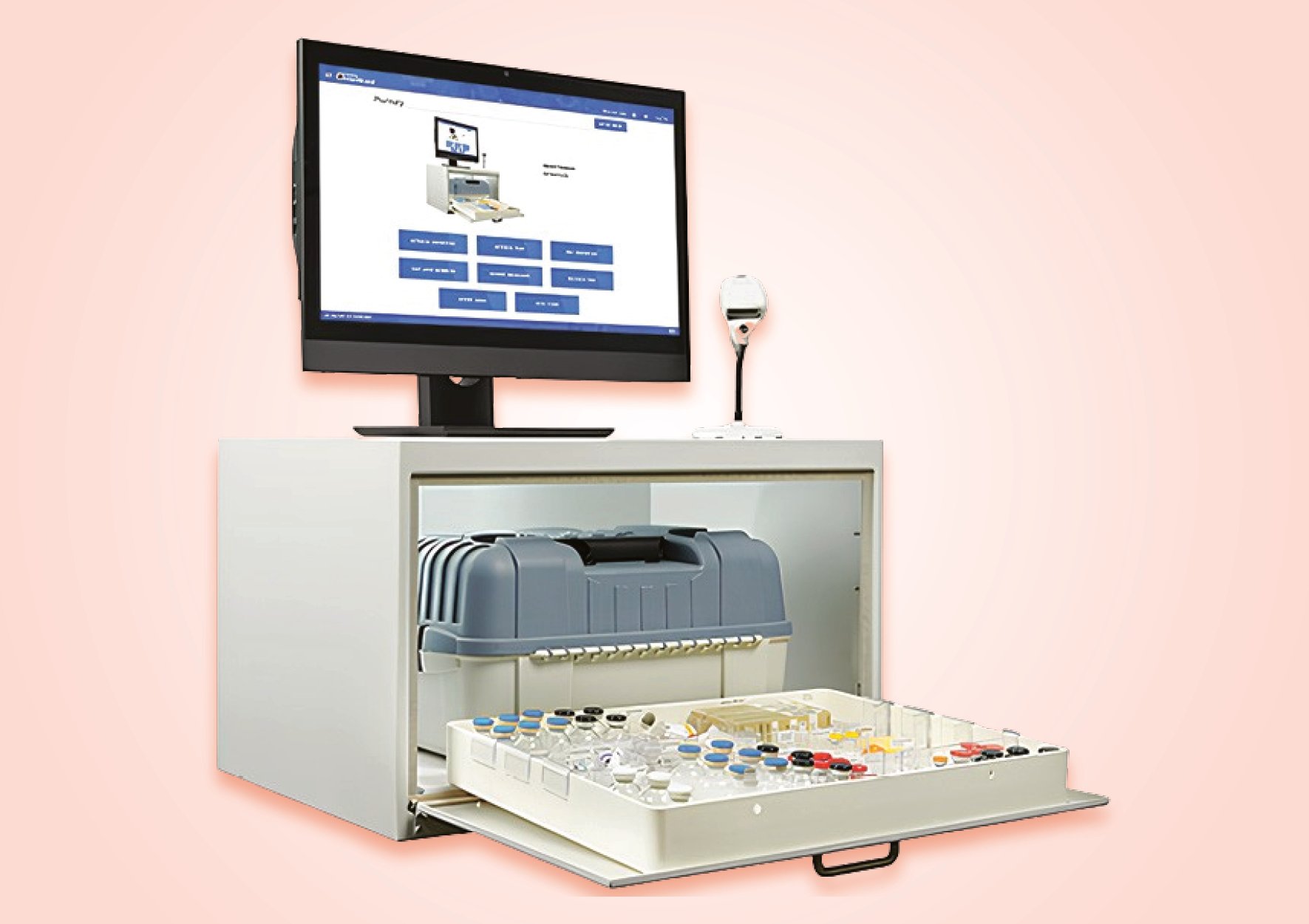- Show Menu
- Contact Us
- FAQs
- Reader Service
- Survey Data
- Survey Winners
- Testimonials
- Upcoming Events
- Webinars
- White Papers
Using ADC Technology to Prevent Diversion
 Q&A with
Q&A with
W. Perry Flowers, RPh, MS
Pharmacy Purchasing & Products: How can ADCs best be used to monitor diversion?
W. Perry Flowers: Years ago when automated dispensing cabinet (ADC) technology was in its infancy, cabinets functioned simply as locked storage containers, but this is no longer the case. ADCs are now capable of tracking and producing reports on all usage data, including every type of activity performed through an individual or group of cabinets, who performed it, and the day and time the activity occurred. The sophisticated data analytics that have been developed in recent years allow pharmacy unparalleled access to a range of reports detailing the removal of any drug at any time. However, all ADC functions must be employed to track and impact diversion rates. For example, tracking canceled transactions is a vital measure to preventing diversion. If this, along with other functions, is not enabled, the ADC’s utility reverts to simply being a storage device and prevents the facility from realizing its monitoring and tracking benefits. Pharmacy directors must ensure that all transactions, including canceled ones, are part of the analytic review. Running and reviewing reports on a regular basis—daily, weekly, monthly, and quarterly—will uncover both singular inconsistencies, as well as long-term trends and patterns, which should be used for making informed decisions to maximize the value of the ADC.
Using electronic monitoring and data support tools with ADCs further improves diversion-monitoring efforts. We are currently using two different data support tools and have partnered with one of these vendors to help grow, develop, and mature the technology. We run day-to-day discrepancy reports, and these transactional documents are sent to nursing leadership to ensure that discrepancies are resolved. Trending reports are run weekly, monthly, and quarterly as well to uncover discrepancies, with a special focus on canceled transaction trends. Pharmacy then works with nursing leadership to validate acceptable use or uncover possible diversion.
As ADC technology continues to mature, so do the efforts of those seeking to divert. Experience has shown that diverters are often some of the most creative staff employed at hospitals. As ADC analytics are developed that prevent one type of diversion, diverters will undoubtedly pursue alternate avenues in an attempt to outsmart the machines and get around these controls. Therefore, pharmacy leaders must thoroughly understand the technology’s capabilities and how best to utilize these tools to prevent diversion.
PP&P: What recent diversion trends have you observed?
Flowers: Data at our facility has revealed that diversion rates spike during times of economic hardship. In addition, when considering the term diversion, many pharmacists immediately assume the target is controlled substances; however, we have noticed that diversion of a variety of medications—not only controlled substances—increases when health care costs increase significantly, the economy is stagnant, or when facilities face employee cutbacks. For example, during cold and flu season, we assign a high level of monitoring to antibiotics in ADCs to monitor for diversion and/or self-treatment. Also, during economic downturns, occasionally staff will divert more expensive medications for the purpose of reselling them, rather than for personal use.
To address these conditions, we require a blind count for certain controlled substances and some non-controlled substances to uncover possible diversion; our practice is to rotate the blind count among controlled substances so that patterns are not created. Substances that are considered highly likely to be diverted or have a track record of being diverted also are deemed to require a blind count.
It should be noted that considering the vast scope of our health system—it comprises 11 hospitals that dispense 1.5 million doses per month, 450 patient care areas, 6000 nurses, and 200 pharmacists—diversion of any type is relatively rare.
PP&P: What is the utility of moving to biometric fingerprint identification versus using passwords to access ADCs?
Flowers: Biometric fingerprint identification is employed throughout our health system. While passwords can be shared or stolen, fingerprints cannot; for this reason, fingerprint technology is a valuable tool to monitor for and prevent diversion. Our experience has shown that out of approximately 10,000 employees, only a handful consistently fail to scan. If an employee states that his or her fingerprint does not scan properly, this information is not accepted as fact until it has been fully vetted. If the failure is confirmed, he or she is assigned a password for ADC usage that is changed every 90 days. Periodically we have these employees retry their fingerprint to document continuing failure to scan or to successfully switch them to this improved technology.

PP&P: What ADC diversion-prevention initiatives have been implemented in high-traffic areas, such as the ED?
Flowers: Contrary to the popular belief that areas with a higher volume of patients and staff translates into an increased rate of diversion, in our facility, data has demonstrated that high-traffic areas actually have lower rates of diversion than lower-traffic areas. Because diverters are not aware of all the tools and techniques for monitoring diversion from ADCs, they tend to gravitate toward more deserted areas of the hospital where they can plan and execute their diversion in relative privacy. After evaluating rates of diversion per 1,000 doses, pharmacy has focused its monitoring efforts in the slower moving areas where diversion is more likely to be successful.
In an effort to prevent diversion and improve patient safety, profiled ADCs are preferred in the ED and the inpatient units; however, we currently do not use profiled ADCs in all our EDs. When evaluating which patient safety initiative to implement first, pharmacy leadership made the decision to focus on strategically deploying BCMA throughout the ED first and planned for the addition of profiled ADCs at a later date. Due to the lack of profiled ADCs in the ED, we utilize additional safety controls, including random audits, chart documentation versus withdrawals, and documentation of waste to augment our diversion prevention efforts.
PP&P: Should additional monitoring be required for temporary staff as compared with regular employees?
Flowers: Additional monitoring is not necessary provided the procedure for assigning temporary access to ADCs is robust and well developed. At our facility, the patient care director or charge nurse is responsible for providing traveling or pool nurses with temporary access that will expire at the end of their shifts. Developing the procedure for assigning temporary access can be a cumbersome, difficult experience, but is vital to accurately track medication usage and prevent diversion. Pharmacy and nursing should work together to create a policy and procedure that ensures accuracy in medication-use tracking for these employees while maintaining efficiency in workflow.
PP&P: What ethical responsibility does a pharmacy director have when a suspected employee resigns before admitting to a theft and subsequently gains employment at a nearby hospital?
Flowers: Each case of diversion is unique and must be dealt with on its own merits. Within a health system, this information should be shared with the director of pharmacy at the other facility. However, if the diversion is suspected but not confirmed by an admission of guilt, in my experience this information is not shared with a director outside of the health system. Without a confirmation of guilt, a statistically significant standard deviation in an ADC report by itself is circumstantial evidence, and not sufficient to prove diversion. Because there may be another explanation for the employee’s high use of controlled substances, the lack of clarity necessitates a prudent approach. Obviously if diversion is confirmed, the event must be reported to the appropriate state board.
In cases when a reference is sought for the employee in question, our human resources policy is to confirm only years of service and the ability to be rehired.
W. Perry Flowers, RPh, MS, is the system executive of patient care support and system pharmacy at Memorial Hermann in Houston. He received his BS in pharmacy from the University of Houston, his MS in pharmacy from the University of Texas at Austin, and completed an accredited general clinical residency at Parkland Memorial Hospital in Dallas. Perry’s professional responsibilities include strategic positioning, implementation, and monitoring of standardization activities for the departments of pharmacy, respiratory care services, and clinical nutrition.
Like what you've read? Please log in or create a free account to enjoy more of what www.pppmag.com has to offer.








